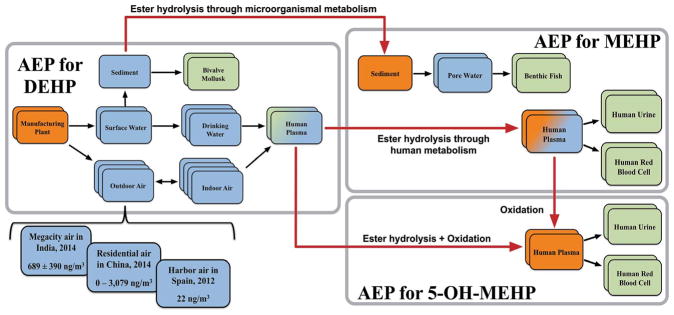Fig. 1.
The two elements of the Aggregate Exposure Pathway (AEP) framework are key exposure states (KESs; rectangles) and key transitional relationships (KTRs; arrows). Each KES captures spatial, temporal, and organism-specific exposure information. There are two specialized KESs: a source (orange rectangle) and a target site of exposure (TSE; green rectangle). In some cases, a TSE for one stressor can also act as an intermediate KES for another stressor depending on a user’s preferred target of interest (shown as blue-green rectangles). In other cases, a source for one stressor can also act as an intermediate KES for another stressor when there are multiple generations of metabolites (shown as blue-orange rectangles). There are also two types of key transitional relationships: processes that describe the movement of a stressor between media within an AEP (black arrows) and processes that describe the conversion of one stressor to another across two AEPs (red arrows). Here, a hypothetical AEP for diethylhexyl phthalate (DEHP) is presented with inclusion of several known media types in which it is found, along with hypothetical AEPs for two metabolites of DEHP, monoethylhexyl phthalate (MEHP) and 5-hydroxy-monoethylhexyl phthalate (5-OH-MEHP). Each media type is represented by stacks of KESs associated with that medium, with each KES representing exposure data from an individual study.

